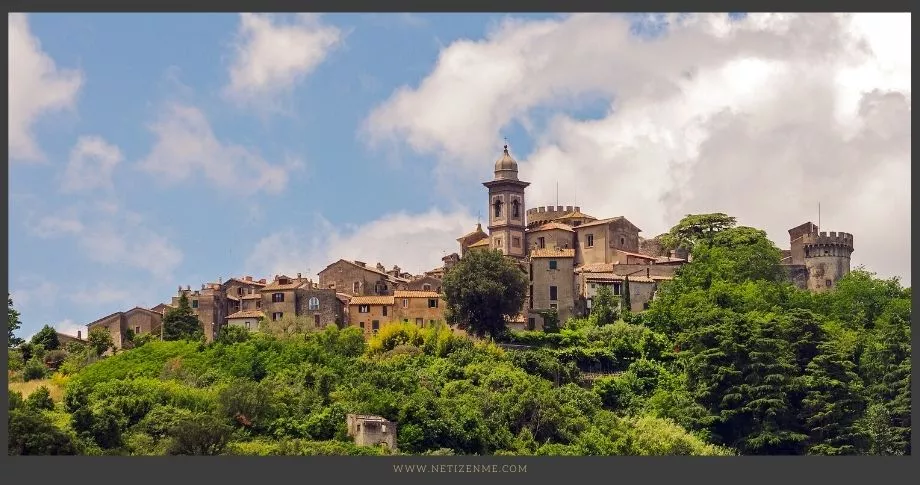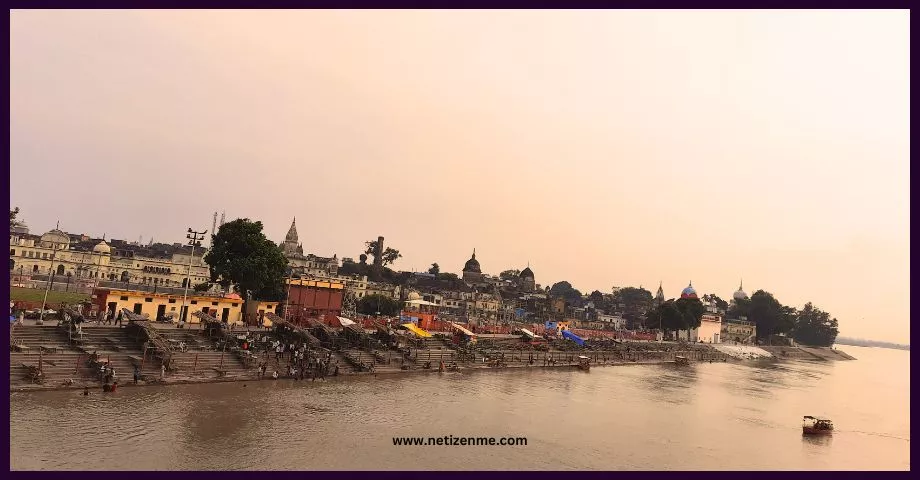Neolithic architectural sites refer to archaeological locations that contain the remains of structures and buildings dating back to the Neolithic period, which spanned roughly from 10,000 BCE to 2,000 BCE. This era marked a significant transition in human history, characterized by the shift from hunting and gathering to settled agricultural communities. The characteristics found in Neolithic architectural sites offer valuable insights into the lifestyle, technology, and cultural practices of early agricultural societies.
What are the characteristics commonly found in Neolithic architectural sites?
Neolithic architectural sites showcase several distinctive characteristics that reflect the lifestyle, technological advancements, and cultural practices of the communities during that period. Let’s delve into the key features:
Settlement Patterns
Example: Çatalhöyük in Turkey is a remarkable Neolithic site featuring closely packed mud-brick houses with shared walls, suggesting a close-knit community.
During the Neolithic period, a pivotal shift occurred in human societies as they transitioned from nomadic lifestyles to settled agrarian communities. This transformative change was propelled by several interconnected developments. Chief among them was the domestication of plants and animals, as communities began cultivating crops like wheat and domesticating animals such as cattle. This shift to sedentary agriculture enabled people to establish permanent settlements, fostering reliable food sources and supporting larger populations. Concurrently, advancements in pottery and storage facilitated the preservation of surplus food, contributing to the permanence of settlements.
The social fabric adapted to this change, with emerging systems for resource distribution, communal decision-making, and the delineation of property rights. Additionally, technological innovations in stone tools and the consideration of environmental factors, such as fertile land and water sources, played integral roles. These collective developments gave rise to organized, settled communities with well-defined structures, setting the stage for more complex civilizations to unfold in subsequent historical epochs.
Domestic Architecture
Example: Skara Brae in Orkney, Scotland, reveals well-preserved stone-built houses with furniture, showcasing an early form of architectural planning.
In Neolithic settlements, houses were crafted from locally available materials, showcasing a resourceful use of the environment. Common building materials included mud bricks and wattle and daub, emphasizing sustainability and adaptability to the geographical features of the region. The construction of these houses was often a communal effort, reflecting a sense of shared responsibility within the community. The houses typically featured hearths, serving both practical and symbolic purposes. Functionally, hearths provided a central space for cooking and warmth, contributing to the daily activities of the household. Symbolically, they held cultural significance, possibly serving as communal gathering points or representing a focal point for rituals and traditions. Additionally, these structures incorporated storage areas, highlighting the importance of preserving food supplies and personal belongings within the household. The architectural choices in Neolithic housing underscore the harmonious integration of human habitats with the natural landscape, reflecting the ingenuity of early settled communities.
Ceremonial and Ritual Spaces
Example: Stonehenge in England is an iconic Neolithic monument, possibly used for religious ceremonies or astronomical observations.
Neolithic sites are marked by designated areas that cater to communal activities, ceremonies, or rituals, underscoring the spiritual and religious dimensions embedded in the daily lives of these ancient communities. These communal spaces were not merely utilitarian but held profound cultural and symbolic significance. They likely served as gathering points for important communal events, fostering social cohesion and shared experiences. Additionally, the presence of ritualistic spaces suggests a belief system that integrated spiritual practices into the fabric of everyday life. These communal areas may have been used for ceremonies related to agriculture, celestial events, or rites of passage. It provides insights into the cosmological and symbolic frameworks of Neolithic societies. The intentional planning and construction of spaces for communal and ritualistic purposes showcase the sophistication of social organization. And also cultural practices within these early settled communities.
Advanced Construction Techniques
Example: The Megalithic Temples of Malta showcase advanced construction with massive stone blocks, indicating a high level of architectural expertise.
During the Neolithic era, builders showcased remarkable advancements in construction techniques, transitioning from rudimentary structures to more sophisticated architectural forms. The use of durable materials such as stone, clay, and wood marked a significant departure from earlier practices, reflecting a heightened mastery of available resources. This shift in construction methods allowed for the creation of more permanent and intricate buildings. It indicates a growing understanding of structural stability and design principles. Neolithic communities displayed an increased ability to manipulate their environments, adapting raw materials into structures. That served not only practical purposes but also showcased a burgeoning architectural aesthetic. The evolution from simple dwellings to more complex architectural forms underscores the innovative capacities of Neolithic builders. And also their capacity to create enduring structures that stand as testaments to their evolving societal and technological prowess.
Defensive Structures
Example: Skara Brae in Orkney features stone walls, possibly serving defensive purposes or protecting against the elements.
Certain Neolithic sites reveal evidence of defensive measures, including the presence of ditches or walls. Which is hinting at heightened concerns about security and protection within these communities. The incorporation of such defensive features suggests a recognition of external threats or a desire to establish boundaries for safeguarding the inhabitants. These defensive structures signify a shift in societal dynamics. Which indicates a level of organization and a collective effort to ensure the safety and stability of the community. The implementation of defensive measures also highlights the complex interplay between environmental factors and the human need for security, showcasing how Neolithic communities adapted their architectural strategies to navigate the challenges of their evolving social landscape.
Evidence of Specialized Spaces
Example: The Neolithic site of Jericho in the West Bank reveals evidence of a tower, possibly used for defense or as a signaling structure.
In Neolithic communities, there was a deliberate allocation of spaces for distinct functions. Which emphasizes a rudimentary division of labor and organization within these settlements. These designated areas served specific purposes, encompassing food storage, workshops, and communal gathering spaces. The identification of separate zones for these activities underscores the emerging complexity and specialization in societal roles during the Neolithic era. The existence of workshops implies the development of craftsmanship and skills. While communal spaces suggest a shared social life and the importance of collective activities. This division of functions within the built environment reflects an increasing sophistication in the planning. And also utilization of architectural spaces to meet the diverse needs of the community.
Integration with Natural Landscape
Example: The village of Dispilio in Greece is situated along the shores of a lake, demonstrating a strategic use of the natural environment.
Neolithic architecture demonstrated a conscious effort to harmonize with the natural environment, reflecting an acute awareness of the surrounding landscape and its available resources. Unlike later architectural styles that might impose on the environment, Neolithic structures were often integrated seamlessly into the topography. The use of locally sourced materials, such as stone, clay, and wood, not only showcased practicality but also minimized the impact on the ecosystem. This attunement to the natural surroundings reveals an early understanding of sustainability and an intentional relationship between human habitats and the broader landscape. The Neolithic communities exhibited a remarkable ability to adapt their built environment to coexist harmoniously with the ecosystems that supported their livelihoods.
Notable Neolithic architectural sites from different regions:
Çatalhöyük (Turkey):
Located in modern-day Turkey, Çatalhöyük, a UNESCO heritage site is one of the most well-known Neolithic sites. It is a very large Neolithic and Chalcolithic proto-city settlement in southern Anatolia, which existed from approximately 7500 BC to 6400 BC. It flourished around 7000 BC in closely packed mud-brick houses, some with elaborate wall paintings. The site provides evidence of early agricultural practices and communal living.
Skara Brae (Scotland):
Situated in Orkney, Scotland, Skara Brae is a Neolithic village dating back to around 3100 BCE. It consists of well-preserved stone-built houses connected by covered passageways. First uncovered by a storm in 1850, Skara Brae offers insights into Neolithic domestic architecture and daily life.
Stonehenge (England):
Stonehenge is an iconic Neolithic monument located in England. Built-in several phases between 3000 BCE and 2000 BCE, it consists of vertical sarsen standing stones, each around 13 feet high, seven feet wide, and weighing around 25 tons, topped by connecting horizontal lintel stones arranged in circular patterns. Stonehenge is associated with astronomical observations and possibly religious ceremonies.
Megalithic Temples of Malta (Malta):
The Megalithic Temples of Malta, including Ġgantija and Ħaġar Qim, are elaborate stone structures dating back to approximately between 3600 BC and 2500 BC. These temples showcase advanced megalithic construction techniques and are considered among the world’s oldest freestanding structures.
Jericho (West Bank):
Jericho is an ancient city with evidence of continuous settlement dating back to around 9600 BCE. The Neolithic site of Jericho includes a stone tower, possibly used for defense or signaling. It provides insights into early urbanization.
Dispilio (Greece):
Dispilio is a Neolithic lakeside settlement in Greece, dating to around 5500 BCE. The site contains well-preserved wooden structures, including houses and a palisade. Dispilio offers insights into the integration of early communities with natural landscapes.
Conclusion – Characteristics Commonly Found in Neolithic Architectural Sites
These Neolithic architectural sites represent diverse aspects of early settled life, from communal living in Çatalhöyük to ceremonial practices at Stonehenge. Neolithic architectural sites provide valuable insights into the social, economic, and religious aspects of early settled communities, showcasing a fascinating evolution in human architecture. Studying these sites helps archaeologists and historians understand the complexities of Neolithic societies, including their architecture, social organization, and cultural practices.
Further reading about Neolithic architectural sites:
- “Europe before Rome: A Site-by-Site Tour of the Stone, Bronze, and Iron Ages” by T. Douglas Price
- “Archaeology: Theories, Methods, and Practice” by Colin Renfrew and Paul Bahn
- “The Archaeology of the Mind: Neuroevolutionary Origins of Human Emotions” by Jaak Panksepp
- “The Oxford Handbook of Neolithic Europe” by Chris Fowler, Jan Harding, and Daniela Hofmann
This article is written by:
Our professional writers and editors are passionate about sharing high-quality information and insights with our audience. We conduct diligent research, maintain fact-checking protocols, and prioritize accuracy and integrity to the best of our capacity.
You can cite our articles under the author name "Netizenme"





